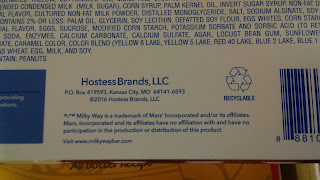On 5 December 2016, Le Monde reported on plagiarism charges against Etienne Klein, Professor at the Ecole Centrale in Paris, Director of Research at the Office of the Atomic Energy Commission (CEA), President of the Institute of Advanced Studies for Science and Technology and presented a response by Professor Klein:
From a translation of the original French:
The readers of scientific works are not unaware of the fact that the scientists in general and physicists in particular share ways to say their knowledge, which are so to say become canonical. It can inform, explain a physical law or a principle, but we cannot reformulate what has been stated with accuracy. When writing that the earth revolves around the Sun, we do not put quotation marks, no more than it does not cite the names of Copernicus, Galileo and Foucault (Léon, the man of the pendulum). A philosopher, Michel Foucault, a good summary of the Thing:
"I quote Marx without saying it, without putting in quotation marks, and since they are not able to recognize the texts of Marx, I pass to be the one who does not quote Marx. Does a physicist, when doing physics, feel the need to cite Newton or Einstein? He uses them, but he does not need quotation marks, footnotes or commendatory approval that proves how faithful he is to the master's thought. "
This argument is obviously valid for Roger Balian, with whom, according to L'Express, I would have plagiarized an illustration of the second principle of thermodynamics, set out in the mid-nineteenth century. Roger Balian is a colleague of the CEA [Atomic Energy Commission] and a friend of thirty, with whom I participated in August 2001 at the e2phy summer school, "energy in all these forms" , Aimed at helping secondary school teachers fight the disaffection of young people for scientific studies. The two sentences, quite "classical", which the weekly blames me for having copied in the book The Energy of Tomorrow (EDP Sciences, 2005) were pronounced by Roger Balian during the course he gave On this occasion to the professors, then successively taken up by various researchers in various internal seminars of the CEA. "
**As to the matter related to Le pays qu’habitait Albert Einstein (Actes Sud, 2016)
By dint of reading and re-reading certain authors, one ends up internalizing them, to the point, sometimes, to take back some of their expressions or metaphors without realizing it. Hence the presence in my book of four expressions or phrases, very short, of Gaston Bachelard, Paul Valéry and Stefan Zweig, three of the writers who nourished me most. This explanation is not an excuse, but I believe the process, I would even say the process, sufficiently widespread in the world of ideas, that of literature, and that of publishing in general, Nail down all those, and they are legion, who borrow unconsciously or consciously from the authors whom they admire and with whom they maintain a sort of inner conversation.
I turn to the other phrases that L'Express accuses me of having borrowed without citing their author, namely François Cassingena, Philippe Claudel, Louis Aragon, or Roman Jacobson.
Contrary to what is said in the weekly, Roman Jacobson is quoted on page 234 of my book, in quotation marks and with the reference of the work in note.
There remains a sentence of Philippe Claudel, one of Louis Aragon, two of François Cassingéna (who very kindly wrote me that I was "absolved"). I acknowledge that I acted there with negligence and haste. To write this book, I took many notes, consisting of many files, to the point that I was able to mislead some sources or tangle my brushes. These are mistakes and I regret them.
Finally, it seems crucial to point out that it is not the sentences involved (a dozen lines in total, on 240 pages) that make my essay on Einstein, nor did they inspire my approach, My journey on the European traces of the father of relativity, nor the hypothesis that I develop. Every reader is in a position to realize this. These sentences will be placed in quotation marks and referenced in the next edition, or possibly deleted, without my work being altered. "
**Refer to the original text, in French, in Le Monde:
http://www.lemonde.fr/idees/article/2016/12/05/etienne-klein-se-defend-contre-des-accusations-de-plagiat_5043699_3232.html
**As to the initial La Croix matter, one recalls that Abraham Lincoln quoted from the Bible in "The House Divided" speech, but was generally not accused of plagiarism. Most in the audience probably understood the reference.
From AbrahamLLincoln online:
"A house divided against itself cannot stand," a concept familiar to Lincoln's audience as a statement by Jesus recorded in all three synoptic gospels (Matthew, Mark, Luke).
(...)
[Herndon to Lincoln] - 'Mr. Lincoln -- why in the world do you not say to Mr. Douglas, when he is making capital out of your speech, -- 'Douglas why whine and complain to me because of that speech. I am not the author of it. God is. Go and whine and complain to Him for its revelation, and utterance.' Mr. Lincoln looked at me one short quizzical moment, and replied 'I can't.'"
link: http://www.abrahamlincolnonline.org/lincoln/speeches/house.htm






